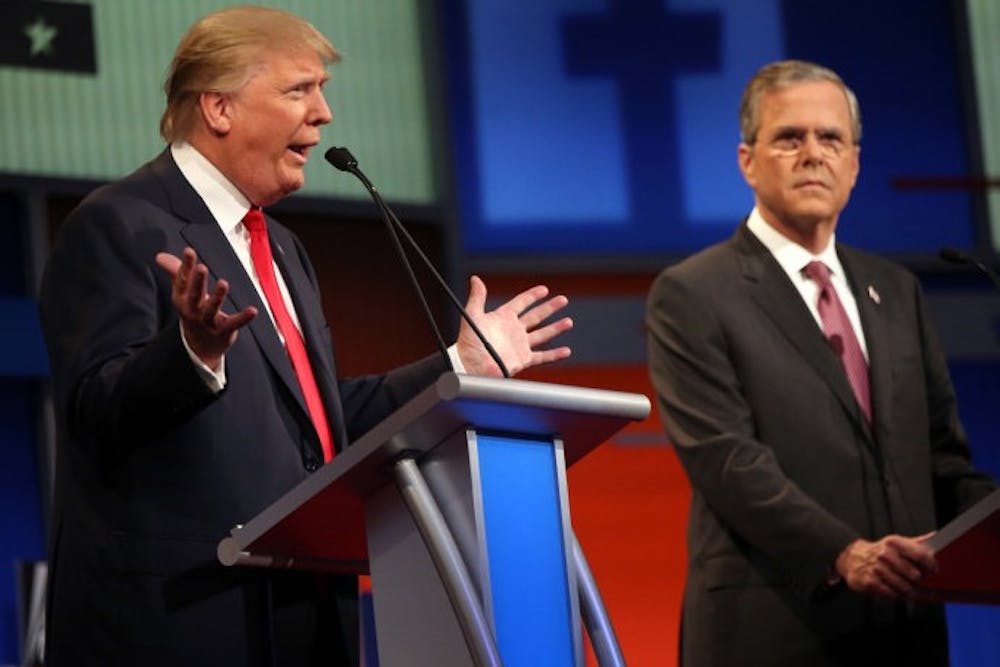National media outlets won’t be the only ones scrutinizing Donald Trump’s every move at Wednesday’s Republican debate.
This semester, students in Kathleen Hall Jamieson’s long-standing “Introduction to Political Communication” course have used the presidential debates as case studies for the relationship between television and politics. Course materials examine past and present televised campaigns, including speech-making strategies and ways candidates use news outlets, to understand the broader field of political communication.
Although much of the class focuses on past elections, the current round of presidential debates has been fully integrated into the curriculum. Students engage in “breakout sessions,” small group conversations that discuss what candidates communicated well in the debates and what they did that stood out. Each breakout session encourages students to more thoroughly evaluate a specific element of the 2016 presidential debate cycle.
“Students made two-minute presentations in breakout session on whether — if implemented — debate reform proposals would improve primary debates,” Jamieson said of the most recent breakout session.
Jamieson referred to a report released in June by the Annenberg Debate Reform Working Group, an initiative of the Annenberg Public Policy Center, which Jamieson directs. The report’s recommendations included limiting moderators to acting as time keepers, bringing in print journalists as debate moderators and prohibiting moderators from asking follow-up questions. Students had to choose one of this fall’s debates and analyze what might have been different had these reforms been applied.
Many students enjoy Jamieson’s unique classroom approach to the debates, which teaches a methodical way of judging candidates’ presence and performance on stage.
“We discuss strategies such as agenda setting and framing and apply them to the debates. Discussing the debates in an academic setting definitely forces a more nuanced and critical viewing of the candidates’ actions,” College sophomore Christin Molisani said.
Molisani cited an assignment from this week that asked whether media outlets were wrong to declare Hillary Clinton as the winner of the first Democratic debate, a question she found interesting.
College sophomore Nick DeMarie agreed, adding that the assignment forced him to consider what “winning” or “losing” a presidential debate actually means for a candidate on national television.
“We look at how the media responds to them more than their actual strategies,” DeMarie said. “For instance, when Trump says something outrageous we look at how news outlets set the agenda, prime and frame it in order to convey meaning.”
DeMarie added that the class compares the current round of debates to strategies used in past campaigns, where the data set is larger and where we already know the outcomes.
Jamieson has been teaching the popular course, which is cross-listed between the Political Science Department in the College and the Annenberg School for Communication, since fall 2002, according to Penn Course Review.









